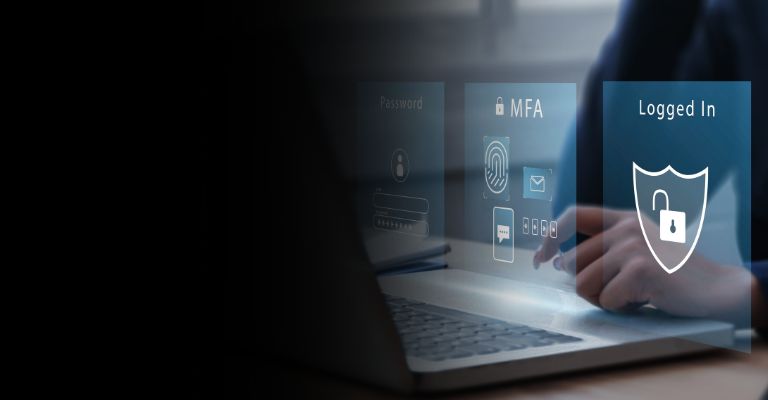In today's digital world, where remote work has become the norm, keeping all this data secure is essential; that's where multi-factor authentication (MFA) comes in to save the day.
When we talk about “what is multi factor authentication”, we can say it is like having several locks on your door instead of just one. When you try to log into a website or app, instead of typing in your password, MFA requires something more, like a particular code sent to your phone or even a fingerprint.
Thus, if someone guesses or steals your password, they can only get into your account with something more for verification. Let's explain MFA and why its role for remote workers in detail.
Why is MFA Critical for Remote Workers?
Increased Risk of Cyber Attacks in Remote Work Environments
Working from home can be comfortable, but it also opens us to attacks by cyber criminals. Hackers actually like targeting remote workers because they know that we are only sometimes as safe as we think. These phishing emails may even fool us into clicking links that can install malware on our computers.
Protect Sensitive Company Data and Systems
In this interconnected world, the cybersecurity risks of working from home have increased. Consider all the essential stuff your company deals with, such as customer information, financial records, and top-secret plans. That would be a disaster if a hacker got his hands on any of that. MFA adds Additional protection to this effect, making it very difficult for cybercriminals to break in and steal valuable data.
How Does Multi-Factor Authentication Strengthen Security?
Multi-factor authentication, or MFA, works just like adding locks to your doors of the future. Rather than just a password, there are extra steps that verify you. Here's how and why it's important for remote workforce security.
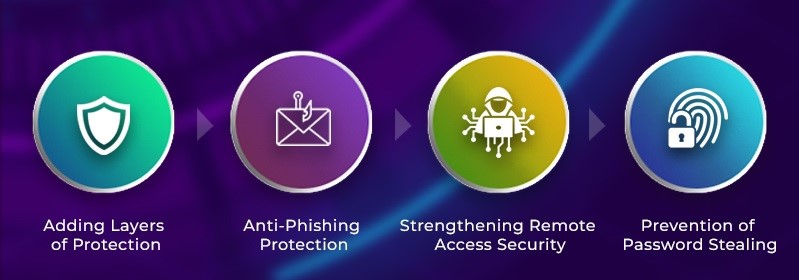
- Adding Layers of Protection
When you sign in to an account with MFA turned on, you're prompted for more than just a password. You may be required to enter a code text into your phone, scan your fingerprint, or use a particular app. So even if a bad guy somehow gets your password, he can't get in without that something extra.
- Anti-Phishing Protection
Phishing attacks are a common tactic that cybercriminals use to fool people into giving up their login credentials. With MFA, you can still fall for a phishing email and unwittingly give away your password. However, the hacker does not get into your account without the second authentication factor, which hugely reduces the risk of falling victim to these scams. So MFA, add another layer for remote workforce protection.
- Strengthening Remote Access Security
Many times, remote workers access company networks and sensitive data from many locations and devices. By adding an extra layer of security at the access points, with the help of remote work security solutions businesses can minimize the risk that these accesses can introduce unauthorized access to company data. This becomes even more imperative in today's environment of increased cyber threats against remote workers.
- Prevention of Password Stealing
Today, cyber thieves can steal passwords in many ways, from data breaches to malware on your computer that captures your login keystrokes. MFA will be the safety net. Attackers pegged a password; so what? They may still not get in because they need your phone—or whatever other authenticating device is required in addition to the password.
Implementing Multi-Factor Authentication: Key Principles
MFA is one of those strong pillars that we are in a new era of working remotely, where our protection is digital. However, there needs to be more clarity in MFA implementation. Here are some guidelines by MFA solutions experts for implementing in your organization.
Selecting the Best MFA Solution for Your Organization
Picking the right MFA solution resembles selecting the most suitable shoes to use while participating in your favorite physical sport game. In other words, it is wearable, dependable, and ideal for the intended use.
- Assess Your Needs: This would entail identifying what the organization needs for security and what the remote workforce may need. Some considerations include the organization's size, the data's nature, and the user's experience level.
- Compare MFA Options: MFA can be as basic as a one-time password sent via SMS or as elaborate as biometrics. When studying this fact, be sure to investigate all the other possibilities regarding simplicity, flexibility, and integration with the rest of your systems.
-
Integration Consideration: This is vital for choosing the best MFA for cybersecurity for remote workers. Businesses should seek an MFA solution that can be quickly adopted into his current IT systems and software.
Other factors that can facilitate the implementation and effectiveness include ease of integration into this platform and common platforms like Microsoft Azure, Google Workspace, and Salesforce.
- Customize Security: When selecting an MFA solution, particular attention must be paid to security factors. These factors include encryption, authentication, source, and experience of the free VPN.
Illustrate Benefits of MFA
Getting an MFA right is more than flipping a switch; it is just as much about ensuring your workforce understands why it's necessary, how it is set up, and how to use it. When you spread awareness among your employees or others who use the company IT systems, it brings synergy. They interpret the benefits more plainly and begin valuing MFA.
You should let the employees know that MFA brings an extra layer of protection to their accounts and explain why information security is crucial.
Provide Clear Instructions to Employees
Ensure your employees have comprehensive and easily understandable instructions on MFA implementation. Use screenshots or brief videos to make it easy to achieve the goal you want to achieve. Make sure they understand the role of MFA as best cybersecurity for remote workers.
Provide Continuing Support
Most employees might be new to the concept of MFA implementation; thus, make sure you are willing and ready to provide the necessary help and guidance. Such resources should be developed: Self-service resources for your employees, including FAQs, help articles and support resources, can be accessed anytime needed.
Reinforce Security Awareness
Schedule a meeting or a workshop addressing typical behavior in security: how to create a robust password, how to beware of the forms phishing attacks take, and how to protect their multi-factor authentication devices.
Challenges in Implementing Multi-Factor Authentication
- Resistance from Users One of the biggest barriers to MFA is the involvement of employees in its implementation process. Suppose they feel like the implementation will add more problems or inconvenience to them. In that case, they may question why it should be implemented or even worry about remembering another group authentication method.
- Complexity of Integration
However, implementing MFA techniques with other IT systems and processes is quite a sassy idea, especially for geographically distributed employees. It becomes an issue when one or more devices or applications aren't compatible with your MFA system. Integrating MFA across all remote access points will likely take ample time and require more time and resources.
- Cost Considerations
MFA for remote workforce security may create capital expenditures, some of which are acquiring hardware token devices, software licenses, or third-party services. This could be an issue for organizations with very tight budgets for their adoption, especially where they show no interest in the represented long-term returns.
- Lack of Training, and Awareness There is a genuine call for appropriate training so that staff members situated millions of kilometers apart can appreciate how rightly to utilize it. However, a challenge in implementing this approach is to equip staff in different geographies with full-on training and support to empower an MFA process; it needs a clear message, simple tools and templates, and repeated information support to master an MFA process and feel comfortable with it.
How to Overcome Challenges While Implementing MFA Solution?
Overcoming Users Resistance
It is safe to say that it is in their interest to regularly and effectively explain why MFA needs to be implemented and declare all the myths regarding it. The solution is to give details on how hackers have attacked various companies and how MFA can be used to prevent such incidents; this will aid in making the employees understand the importance of MFA.
Imparting Detailed Training
Training is seen as an area that would determine if MFA for remote workers is implemented appropriately. There should be easy-to-follow training material, documentation with clear instructions, detailed presentations such as videos, and web space available to answer questions and clarify difficulties for the employees. Here, you can seek help from remote work security solutions providers like Cybalt.
Budget Planning
In as much as the implementation of MFA may be associated with the word implementation cost or investment, organizations should balance the cost against the multiple-fold improvement on the security aspect, which is likely to minimize the possibility of experiencing a data breach.
This can be done by presenting a cost-benefit analysis that would explain why there is a need for the budget towards the implementation of MFA.
Streamlining Integration
In the case of MFA for remote workforce protection, one has to ensure that the solution is well integrated with the systems or applications already in the picture. The right approach that many of the MFA solutions with good APIs and that supports most of the mainstream platforms makes the deployment easier and, on the other side, reduces the major hurdles
Have a Free Consultation on Remote Work Security Solutions from Cybalt- Today
As such, Multi-Factor Authentication is a must-have for remote workers. Risk due to cyber attacks increases when the nature of work turns remote. In such a situation, MFA solutions help to mitigate that increased risk and thereby helps to keep sensitive company data and systems safe.
With growing cyber threats, MFA adds security to multiple authentication factors and decreases the possibility of unauthorized access. Though there are challenges in adopting MFA, the benefits stem extensively from the costs. This will ultimately safeguard an organization's security against a breach and financial loss.
By prioritizing MFA implementation and avoiding best-practice landmines, organizations can strengthen their security posture and better safeguard their remote workforce and sensitive data. Talk to experts at Cybalt today and have a robust remote work security solution from us.
Other Blogs
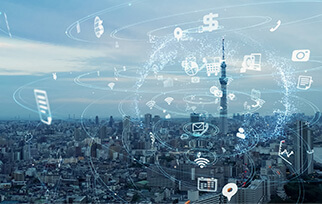
From Nuclear Centrifuges To Machine Shops: Securing IoT
IoT or ‘the internet of things’ has been around for a lot longer than the buzzword
Read More

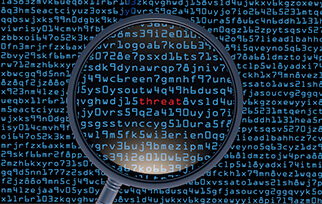
Demystifying XDR
As the capabilities of threat actors have increased so have the tools which we utilize to detect and respond to their activities.
Read More

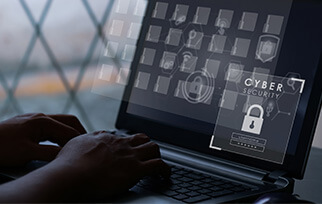
Cybersecurity In A Post Pandemic World
As many cyber security practitioners will tell you, the most imminent and dangerous threat to any network are the employees accessing it.
Read More


